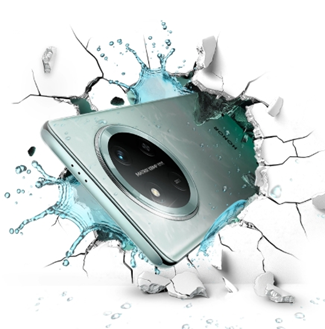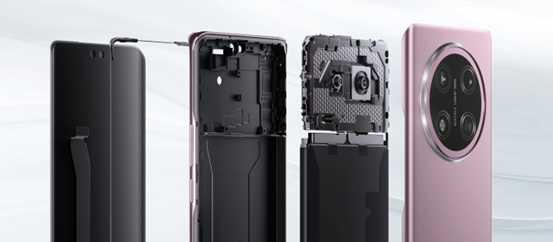Smartphones getting uncomfortably hot is a common problem that affects nearly every user at some point. When your device heats up excessively, it's not just uncomfortable to hold - it can actually damage internal components and reduce your phone's lifespan. Modern phones generate heat naturally during operation, but when temperatures rise beyond normal levels, it indicates something isn't working as it should. In this article, we'll explore the key reasons behind smartphone overheating and provide practical solutions to keep your device running cool and efficiently.

1. Processor Overload: The Main Culprit
Your phone's processor works like a tiny brain, and just like human brains, it generates heat when working hard. Modern smartphones pack incredible computing power into compact spaces, which means heat has nowhere to escape. Processor-intensive activities like gaming, video editing, or augmented reality apps push your CPU to its limits, causing significant heat buildup. Even everyday tasks like streaming high-quality video or using GPS navigation for extended periods can strain the processor. Many phones try to compensate by throttling performance when temperatures rise, which you might notice as sudden lag or stuttering. Background processes can also contribute - if too many apps are running simultaneously, your processor has to work overtime.
2. Environmental Heat Factors
Why Leaving Your Phone in the Car Is Dangerous
Car interiors can become ovens on warm days, with temperatures soaring far above the outside air temperature. Even on a mild 25°C (77°F) day, a parked car's interior can reach 50°C (122°F) within an hour. Your phone's battery and components aren't designed to withstand such extreme heat for prolonged periods. The lithium-ion battery inside your phone is particularly vulnerable - high temperatures accelerate chemical reactions that can permanently reduce battery capacity. In worst-case scenarios, excessive heat can even cause battery swelling or leakage. If you must leave your phone in the car, place it out of direct sunlight (like in the glove compartment) and consider turning it off completely.
、

The Truth About Using Phones in Direct Sunlight
Using your phone at the beach or by the pool might seem harmless, but direct sunlight creates a perfect storm for overheating. The sun's rays not only heat your phone's surface but also make the screen harder to see, causing you to max out brightness - which generates additional heat. Dark-colored phone cases absorb even more solar radiation, turning your device into a miniature heater. Even if you're just reading an e-book, the combination of ambient heat and increased processor activity from display brightness can push your phone's temperature into dangerous territory. When outdoors, seek shade for both yourself and your phone. If you notice your device getting warm, give it a break in a cooler environment before continuing use.
3. Battery Issues Causing Overheating
Your phone's battery is both a victim and contributor to overheating problems. As batteries age, their internal resistance increases, causing them to generate more heat during charging and discharging. Fast charging technologies, while convenient, pump more current into the battery in less time, inevitably creating additional heat. Using your phone while it's charging compounds this effect - the battery is simultaneously taking in energy and supplying power to your activities. Poor quality or damaged charging cables can also cause overheating by creating electrical resistance. Wireless charging generates even more heat due to energy loss in the transfer process.
4. Poor Ventilation and Case Problems
That stylish protective case keeping your phone safe might actually be trapping heat. Many phone cases, especially rugged or heavy-duty models, act like insulation blankets, preventing heat from dissipating properly. The problem worsens when you combine thick cases with processor-intensive activities - the heat has nowhere to go. Even without a case, placing your phone on soft surfaces like beds or couches while charging or performing demanding tasks can block ventilation. Some phones have specific heat dissipation designs that rely on certain areas remaining unobstructed. For better cooling, consider using thinner cases during intensive usage periods or removing the case entirely when charging.
5. Software Glitches That Cause Overheating
Sometimes the overheating culprit isn't physical at all - software issues can make your phone work harder than necessary. Background apps stuck in loops, malfunctioning services, or even malware can cause your processor to run continuously at high capacity. Operating system bugs sometimes prevent proper thermal management, failing to throttle performance when needed. You might notice your phone getting warm even during light use, or the battery draining unusually fast - both signs of potential software problems. Regular software updates often include thermal management improvements, so keeping your phone updated is crucial.
6. Cooling Down Your Phone
When your phone overheats, quick action can prevent long-term damage. First, stop whatever intensive activity you're doing and move to a cooler environment. Remove any case to allow better heat dissipation. Avoid putting your phone in the refrigerator or freezer - the sudden temperature change can cause condensation inside the device. Instead, place it near a fan or in an air-conditioned room. Turning on airplane mode reduces heat by disabling power-hungry radios. For persistent overheating issues, consider using a phone cooling pad designed for gaming devices - these provide active cooling without risking moisture damage. Prevention is better than cure: avoid leaving your phone in hot environments, close unused apps regularly, and monitor which applications cause the most heating.
Conclusion
Managing your phone's temperature is crucial for both performance and longevity. While occasional warmth is normal, consistent overheating indicates underlying issues that need attention. If you’re in extreme environments, consider devices with robust specifications—like the HONOR X9c Specs, designed for safe and stable operation in temperatures ranging from -30°C to 55°C. If your phone frequently overheats despite these precautions, it might indicate hardware problems requiring professional repair. Remember that prevention is always easier than fixing heat damage—your phone will reward your care with better performance and a longer lifespan.